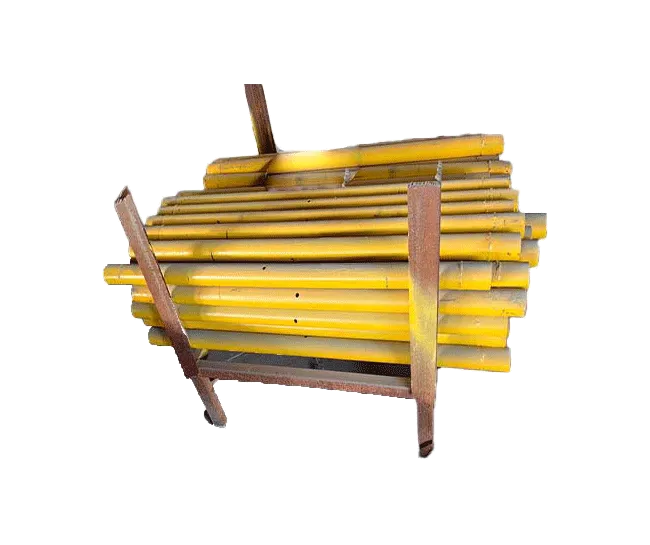Products Description
Bridge Supports: The Key to Load-Bearing and Buffering in Bridge Structures
In bridge engineering, the critical joints connecting the superstructure (such as beams) and the substructure (such as piers and abutments) need to reliably transmit loads while adapting to structural deformation. This core function is achieved by bridge supports (referred to as "bearings" for short). As the "joints" of a bridge, they transfer forces generated by the self-weight of the superstructure, vehicle loads, and temperature changes to the substructure. At the same time, they allow the beam to expand, contract, and rotate within a certain range, preventing structural damage due to stress concentration. They are core components ensuring the safety and durability of the bridge.
I. Types and Structures: Functional Designs Adapted to Scenarios
The type of bridge support should be selected based on the bridge span, load level, structural form, and environmental conditions. Common types and their characteristics are as follows:
- Laminated rubber bearings: Made by alternating layers of rubber and thin steel plates bonded and vulcanized together, they have good elasticity and deformation capacity. Suitable for medium and small-span bridges (such as urban road bridges and rural highway bridges), they can bear vertical pressure and adapt to horizontal displacement, with simple installation and low cost. The rubber layers provide elastic buffering, while the steel plates enhance overall rigidity to prevent excessive deformation of the bearing;
- Pot rubber bearings: Composed of steel pots, rubber plates, stainless steel sliding plates, and other components. The rubber plate is enclosed in the steel pot, and load transmission and displacement control are achieved through the compression and shear of the rubber. Suitable for long-span bridges (such as continuous beam bridges and cable-stayed bridges), they have strong bearing capacity (up to several thousand tons), can adapt to large horizontal displacements and rotation angles, and have excellent seismic performance;
- Spherical steel bearings: With a spherical contact surface as the core, they achieve multi-angle displacement through the sliding and rotation of steel components. Suitable for curved bridges, wide bridges, and long-span steel structure bridges, they have a low friction coefficient, flexible rotation, and can accurately transmit vertical loads and horizontal forces, especially suitable for complex bridge structures requiring multi-dimensional deformation;
- Lead-core rubber bearings: A lead core is embedded in the laminated rubber bearing, which has the functions of load-bearing, deformation, and energy dissipation. The lead core absorbs energy through plastic deformation during an earthquake, reducing the impact of seismic forces on the bridge. They are a common choice for bridges in seismic fortification zones and are widely used in highways and railway bridges in high-intensity earthquake areas;
- PTFE sliding bearings: A polytetrafluoroethylene (PTFE) sliding plate and a stainless steel plate contact surface are set on the bearing surface. The low friction coefficient allows the beam to expand and contract freely, suitable for bridges requiring large horizontal displacement (such as bridges in areas with significant temperature changes), which can reduce the impact of temperature stress on the structure.
II. Core Functions: Coordination of Force Transmission and Deformation
The core role of bridge supports is to balance the contradiction between "load-bearing" and "deformation", specifically reflected in:
- Load transmission: Vertically transferring the dead load (self-weight of the beam, deck pavement, etc.) and live load (vehicles, crowds, etc.) of the superstructure to the substructure, while bearing horizontal forces (such as vehicle braking force, wind force, seismic force), ensuring a clear and reliable force transmission path;
- Displacement adaptation: Allowing longitudinal or lateral displacement of the beam caused by temperature changes (thermal expansion and cold contraction), concrete shrinkage and creep, and load effects, avoiding additional stress due to excessive restraint of the structure;
- Rotation adjustment: When the beam is deformed under force (such as changes in mid-span deflection), the rotation function of the bearing adapts to the beam end rotation angle, preventing stress concentration or cracking at the contact part between the beam and the bearing;
- Seismic buffering: During an earthquake, some bearings (such as lead-core rubber bearings and friction pendulum bearings) consume seismic energy through their own deformation or sliding, reducing the impact of earthquakes on the superstructure and substructure of the bridge and lowering the risk of structural damage.
Whether at both ends of a simply supported beam bridge or on the top of piers of a continuous beam bridge, bearings silently coordinate the force and deformation of the structure, acting as "invisible balancers" for bridge safety.
III. Key Technologies and Materials: The Core of Performance Assurance
The performance of bridge supports depends on the coordination of material selection and structural design. Key technologies include:
- Material performance optimization: The rubber of rubber bearings needs to have characteristics such as aging resistance, fatigue resistance, and high elasticity. Chloroprene rubber or natural rubber is usually used, and the strength is improved through vulcanization; steel components (such as the steel pot of pot bearings and the steel ball of spherical bearings) need to be made of high-strength structural steel (such as Q355, Q460) and undergo anti-corrosion treatment (painting, galvanizing, etc.) to resist environmental erosion; sliding plate materials (PTFE) need to ensure a low friction coefficient and wear resistance to ensure flexible sliding after long-term use;
- Structural sealing and protection: Steel bearings such as pot and spherical bearings need to be equipped with sealing devices (such as dust covers, sealing rings) to prevent dust, rainwater, and debris from entering the interior and affecting sliding or rotation performance; in harsh environments such as dusty and coastal areas, bearings also need to be equipped with protective covers to enhance corrosion resistance and aging resistance;
- Force state regulation: The size design of the bearing (such as the thickness of the rubber layer and the diameter of the steel pot) matches the load and displacement requirements of the bridge. For example, bearings of long-span bridges need to increase the bearing area to disperse pressure, and optimize the sliding surface design to adapt to larger displacements;
- Installation accuracy control: During bearing installation, the elevation, plane position, and levelness need to be accurately adjusted to ensure uniform force on each bearing and avoid eccentric pressure. For multi-span continuous beams, the bearing pre-deviation setting is also required to balance the displacement caused by later creep.
IV. Applicable Scenarios and Selection Principles
Different types of bridges have significant differences in their requirements for bearings, and selection should follow the following principles:
- Span and load: Laminated rubber bearings can be used for medium and small-span (≤20m) bridges; pot or spherical steel bearings are required for long-span (≥50m) bridges; heavy-duty railway bridges usually use pot bearings with high bearing capacity due to large loads;
- Environmental conditions: In cold regions, attention should be paid to the low-temperature crack resistance of bearings, and cold-resistant rubber should be selected; bridges in coastal or industrial areas should prefer bearings with strong corrosion resistance (such as stainless steel components + chloroprene rubber combinations); in areas with seismic intensity ≥7 degrees, seismic bearings should be selected;
- Deformation requirements: Curved bridges and skew bridges need to use spherical bearings that can adapt to multi-directional displacement; areas with large temperature differences (such as cold regions in the north) need to use sliding bearings that allow large displacements;
- Maintenance convenience: Bearings for urban bridges or busy traffic sections should be of types that are easy to inspect and replace (such as pot bearings that can be lifted and replaced) to reduce the impact of maintenance on traffic.
V. Maintenance and Replacement: The Key to Extending Bridge Life
The long-term stability of bridge supports directly affects the safety and durability of the bridge. Maintenance points include:
- Daily inspection: Regularly observe whether the bearing has rubber cracking, steel plate rust, sliding plate wear, excessive displacement, etc., and record the working status of the bearing; check whether the dust cover is intact, and timely clean up debris and accumulated water around the bearing;
- Performance evaluation: Evaluate whether the bearing is evenly stressed and whether the deformation is within the design allowable range through professional testing (such as bearing reaction force testing, displacement measurement). Bearings with unbalanced forces need to be adjusted in time;
- Disease treatment: For bearings with rubber aging and steel rust, surface repair or anti-corrosion treatment is required; if the sliding plate is severely worn, resulting in an increase in the friction coefficient, the sliding plate needs to be replaced; for bearings with excessive deformation or functional failure, a special plan should be formulated for replacement;
- Replacement technology: Bearing replacement requires the use of synchronous jacking technology. The beam is slowly lifted by jacks to avoid structural damage caused by excessive force on a single pier; during replacement, temporary support of the beam is required to ensure construction safety. After installation of the new bearing, the elevation and displacement accuracy need to be rechecked.
Summary
Although bridge supports are small in size, they are the "coordinators of force and deformation" of the bridge structure. With precise material selection, they bear thousands of tons of force, and with clever structural design, they solve deformation problems, silently guarding the safety and stability of the structure throughout the bridge's life cycle. From the laminated bearings of rural small bridges to the giant pot bearings of cross-sea bridges, the selection of each type embodies a profound understanding of the bridge's force characteristics and environmental conditions. As bridges develop towards long spans, heavy loads, and complex environments, bearing technology is also constantly innovating (such as the condition monitoring function of intelligent bearings). In the future, they will play a more important role in ensuring bridge safety and improving maintenance efficiency, becoming indispensable "core joints" in bridge engineering.



